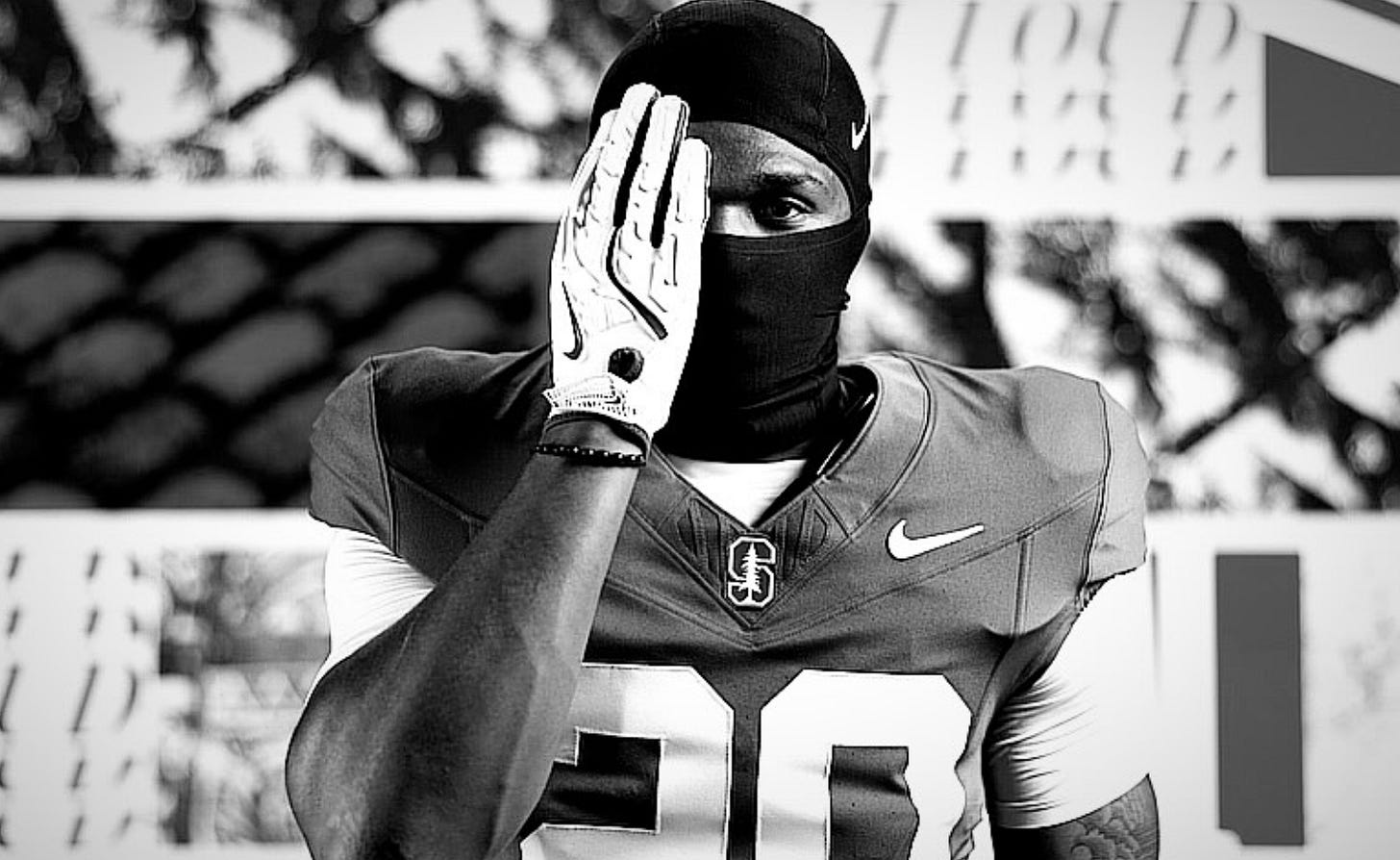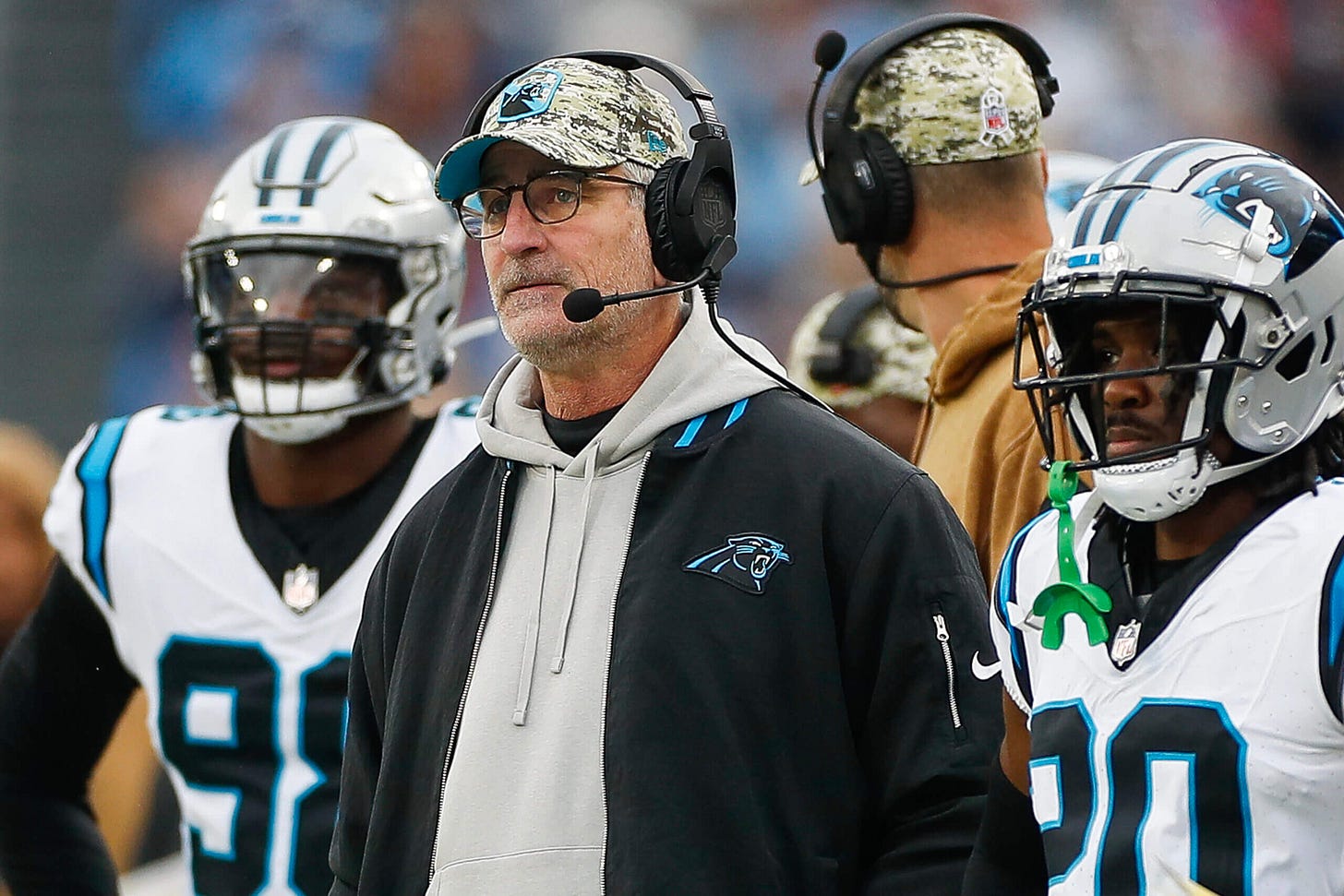Intellectual Brutality
If week zero was any indication, Stanford football appears to be returning to what it did best in the 2010s. Can this program support a volume pig?
Is there a better description of a cube than that of its construction?
- László Tóth, The Brutalist (2024)
Around this time last year, my friend Henri and I sought to see the movie “The Brutalist” at the Toronto International Film Festival. We had already mapped out our schedule with each of the shows we were going to see during the week—only to find we couldn’t get tickets to any of them. The Brutalist tickets proved particularly hard to come by, even on secondhand markets.
TIFF is back this year, though Henri and I have already tempered our expectations. There’s a certain art to picking which movies to go to at a festival like this when you have little to no information to go on. It’s sort of like picking players in CFF—so many options, so many questions—and of course, every year there are showings that I hadn’t even considered that turned out to be some of the best showings.
There’s a parallel to the game of CFF, and perhaps Stanford’s Micah Ford will be one of those players for me this year. The sophomore was not a guy I spent much time thinking about this offseason, and for good reason; this Stanford program has not been a goldmine for RB value the last couple of seasons.
Once upon a time, however, few things in this world were as dependable as Stanford RBs. Under the watch of he who shall not be named, FB Tony Gerhart carried the rock 210 and 343 times in 2008 and 2009, respectively, rushing for over 1000 yards and double digit scores each season. Stepfan Taylor carried the torch with 223 carries for 1137 yards the following season.
Then Stanford’s OC David Shaw was elevated to head coach in 2011, and he continued the work his boss started. Stepfan Taylor finished the year with 242 carries and over 1300 yards. Taylor outdid himself in 2012 with 322 carries, 1530 yards and 13 scores.
Tyler Gaffney plugged in for one season in 2013 with his 1700 rushing yards on 330 carries, and then it was the inimitable Christian McCaffrey who was Shaw’s first 2000 yard rusher in 2015 (on top of 600 receiving yards), only to then be out-gained on the ground by the indestructible Bryce Love in 2017 with his 2118 rushing yards.
Needless to say, this era of Stanford football, dubbed “intellectual brutality” was a special one.
Intellectual brutality doesn't just define Stanford football; it defines the hard work and brains of the whole institution.
- Ashley Westhem (2013)
I have some personal history with this program. A bit of a disappointing anecdote, in fact; in the 2022 offseason, I drafted Stanford’s budding young star EJ Smith (son of former Cowboys RB Emmitt Smith), who was highly regarded by the staff, including David Shaw himself.
ESjr. looked poised for his own 1500+ yard season beginning the year with 118 yards and two scores in week one, and then 22 touches, 114 yards and two more scores the following week vs. USC. Unfortunately, that would end up being the last game he played that season due to injury. He was never the same after that.
There hasn’t been a RB of value to own at Stanford ever since. The old staff that oversaw the rushing machine of the 2010s is long gone, and there have been a few turnovers since.
On my week zero notes on X/twitter I remarked that Stanford, having run 73 plays against Hawaii, could be this year’s version of 2024 Oregon State when Anthony Hankerson broke out of nowhere. These are similar situations in that the respective staffs were viewed as difficult to read ahead of time with regard to what their plans would be on offence. Frank Reich at least had NFL patterns to glean, but these don’t always translate in college. Both staffs appear to want to move fast and run the football.
On Saturday night, we might have gotten an answer as to what the shape of this Cardinal attack will look like for the rest of 2025. Second year RB Micah Ford was the weapon of choice, finishing the contest with 26 rushing attempts and catching two of his five targets.
It should be noted that Hawaii’s run defence might just be the softest one that Stanford will see all year, so the reader should account for the fact that we might have already witnessed Ford’s best performance of the season, but the role and usage is very encouraging.
If the QB play by Ben Gulbranson was any indication of what to expect from Stanford this year (Elijah Brown is still waiting in the wings), they should be running the football early and often.
At six feet tall and 220 pounds, the New Jersey product Ford is built to carry an offence, and he might just have to in 2025. He doesn’t have to shoulder all of the rushing production alone, however, as fellow runners Sedrick Irvin and Cole Tabb (especially Irvin) were also involved. Irvin himself saw 13 opportunities between targets and carries.
Frank Reich’s NFL Tenure
When I read the Fantrax blurb this week on Micah Ford they mentioned that Reich had a workhorse each of his six seasons as head coach in the NFL. That inspired a double take and sent me down the rabbit hole to confirm.
I suppose it is sort of true. In 2018, the Colts lead rusher was Marlon Mack, who carried the ball 195 times for 908 yards and nine scores in 12 games (a convenient sample size for extrapolating to college). The next leading rushers had 60 and 80 carries. The QB himself, Andrew Luck, had 46.
In 2019, Mack played in 14 games, and rushed 247 times for 1091 yards and eight scores. The next two RBs had 52 and 51 carries.
During the 2020 offseason the Colts invested in their RB room, drafting one of the greatest CFF producers of all time in Jonathan Taylor from Wisconsin. He appeared in 15 games as a rookie, rushing the ball 232 times for 1169 yards and 11 scores. The next two runners had 89 and 84 carries.
The 2021 season was probably the highest split to the RB1, with Taylor spearheading the Colts’ attack on 332 carries in 17 games, accumulating 1811 yards and 18 scores. The next two runners had 56 and 28 carries.
The following season (2022), Taylor was injured and only appeared in 11 games, rushing 192 times for 861 yards and four scores. Another former CFF favourite, Zack Moss, finished with 76 carries and Deon Jackson with 68.
As if the list of former CFF legends Reich got to work with in the NFL wasn’t long enough, this bastardo got the privilege of having former Oklahoma State runner Chuba Hubbard at Carolina in 2023. While Hubbard was definitely a workhorse for the Panthers, he wasn’t the only RB to get leaned on. Hubbard finished with 238 carries, and the next runner, Miles Sanders, 129.
Overall, when looking back at Reich’s NFL teams, I was surprised at how run-heavy they were. I was also surprised by how much carry share the RB1s typically received. I also take the fact that Reich has worked with many a CFF legend as a good omen for his tenure in college.
While we don’t have many statistics on Reich’s tendencies, Stanford did run over 70 plays (73 it looks like) vs. Hawaii in week zero. This could be an anomaly or it could suggest they are going to be moving quickly this season. They passed the ball 30 times, and ran it 43 times vs. Hawaii, which is about a 59% run rate.
Micah Ford (6’0, 220)
2024 RUSHING STATS: 76 - 309 - 0
Ford appeared in nine games last season as a true freshman three star from New Jersey. I like his construction—he appeared as a well built and structurally sound runner vs. Hawaii.
And I must admit, I did not realize how productive he was last season in limited action. His season-high of 15 carries vs. Clemson yielded 122 yards (8.1 ypc), and he had individual games of four and six targets vs. TCU and Cal Poly, respectively. He averaged 4.1 YPC on the year and also finished with 15 receptions (22 targets) for 84 yards.
These are pretty good feats for a true freshman player on a bad team. The bad team part doesn’t look to have changed in 2025, but the prospect is presumably better as a sophomore.
Which brings me to the next question: how productive can a player like this be if Stanford is going to be (potentially historically) bad at the P4 level?
It’s one thing to run through a defence such as Hawaii’s (who are usually bad even for G5 standards), another to do it week in and week out.
Well, Stanford is on BYE this week but then plays BYU, BC, UVA and SJSU before their next BYE. Those four games feel like great games in that the Cardinal will presumably be competitive and should have enough success on offence to sustain a player like Ford.
Whether he actually continues to get the workload he got in week zero, of course, is another question. But assuming he does for the purposes of this article, then he will be a valuable asset in September.
October and November are different stories. SMU welcomes Stanford after their second BYE, then it’s four straight vs. Miami, FSU, Pitt and UNC. Cal and ND await after the Cardinals’ third and final BYE. The good news is they avoid Clemson in-conference.
SMU is a hard one to project, given they were in the G5 just two seasons ago. They had a solid defence last season, and when they played Stanford they held them to 10 points. Coincidentally, Ford was Stanford’s lead rusher in that game with 13 carries, but only amassed a measly 31 yards.
Miami and FSU have the talent on defence to make life miserable for Stanford, especially Miami, so those two games would likely be bench weeks for Ford even if he is the workhorse.
Pitt, UNC and Cal are not games that scare me as much at the present moment. ND in the final week would be where you’d cut Ford if you still have him.
Something that appeared clear in week zero is that this needs to be a running team to win games this season. QB Ben Gulbranson finished the day 15/30 passing for 109 yards, no scores and an INT vs. Hawaii. It’s possible he may be replaced later in the year.
Stanford also returns 53% of the starting OL snaps from last season, so the offensive line could be the strength of the offence.
What’s odd is that when you look at this program last year, their two conference wins were vs. some of the ACC’s best teams—Louisville and Syracuse. Even at a micro level, as mentioned earlier, Ford had his best game vs. Stanford’s toughest opponent in Clemson. ◾
If you enjoyed this content and would like to read more, I recommend joining the Pigpen, a community of thousands of degenerate college football fans:




